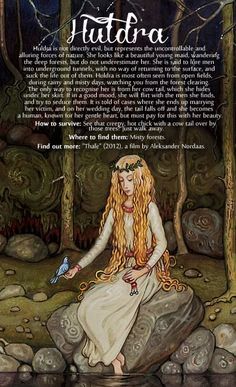In the realm of fantasy role-playing games (RPGs), one cannot ignore the profound impact that Scandinavian folklore has had on shaping the fantastical worlds we explore through gameplay. From enchanting creatures to mesmerizing landscapes, the rich tapestry of Scandinavian mythology has fueled the imagination of game developers and captivated players worldwide. In this article, we delve into the enthralling influence of Scandinavian folklore in the realm of fantasy RPGs.
1. Creatures of Norse Mythology
Scandinavian folklore is teeming with awe-inspiring creatures that have found their way into popular RPGs. From the ferocious giants of Jotunheimr to the mischievous elves and dwarves, these mythical beings lend a sense of wonder and danger to the virtual realm. Titles like “The Elder Scrolls V: Skyrim” and “God of War” have seamlessly integrated these creatures, giving players a taste of the fearsome power and mystique that Norse mythology bestowed upon them.
2. Landscapes Inspired by Nordic Environments
Scandinavia’s breathtaking natural landscapes, with their towering mountains, lush forests, and icy fjords, have inspired the creation of many fantasy RPG settings. Developers often draw upon the beauty and grandeur of places like Norway, Sweden, and Iceland to craft immersive virtual worlds. Games such as “The Witcher 3: Wild Hunt” and “Assassin’s Creed Valhalla” transport players to sprawling landscapes reminiscent of the Norwegian tundra or the mystical forests of Finland, evoking a sense of awe and adventure.
3. Symbolism and Runes
The influence of Scandinavian folklore extends beyond visual aesthetics and into the realm of symbolism and magical systems within RPGs. The intricate and mystical runic alphabet plays a significant role in games like “World of Warcraft” and “Skyrim,” where players can decipher ancient texts and unlock hidden powers. These symbols, derived from Norse mythology, add an extra layer of authenticity and intrigue, immersing players in a world where ancient knowledge holds the key to unlocking their full potential.
4. Epic Norse Sagas and Quests
Scandinavian sagas and epic tales, such as the Poetic Edda and the Prose Edda, inspire intricate questlines and captivating storylines in many RPGs. Games like “God of War” and “Hellblade: Senua’s Sacrifice” draw heavily from these mythological narratives, immersing players in a world of gods, heroes, and epic battles. By embracing the sagas’ storytelling techniques and moral dilemmas, these games offer players a chance to experience the heroic deeds and challenges that defined Norse mythology.
5. Mythical Artifacts and Weapons
The pantheon of gods and heroes in Scandinavian folklore comes with a treasure trove of mythical artifacts and powerful weapons. Games like the “God of War” series and “Assassin’s Creed Valhalla” incorporate legendary weapons, such as Thor’s hammer Mjölnir or Odin’s spear Gungnir. By wielding these iconic items, players become part of the mythology and tap into the folklore’s immense power and allure.
Conclusion
From fierce creatures to mesmerizing landscapes, the influence of Scandinavian folklore in fantasy RPGs is undeniable. The immersive and captivating nature of Norse mythology has provided game developers with a vast repertoire of creatures, quests, symbols, and stories to draw upon. As players embark on their virtual adventures, they are transported to worlds steeped in a rich mythological heritage, allowing them to experience the thrill and enchantment that only Scandinavian folklore can provide.
